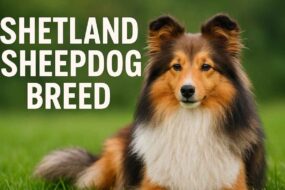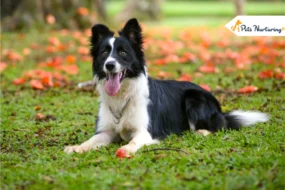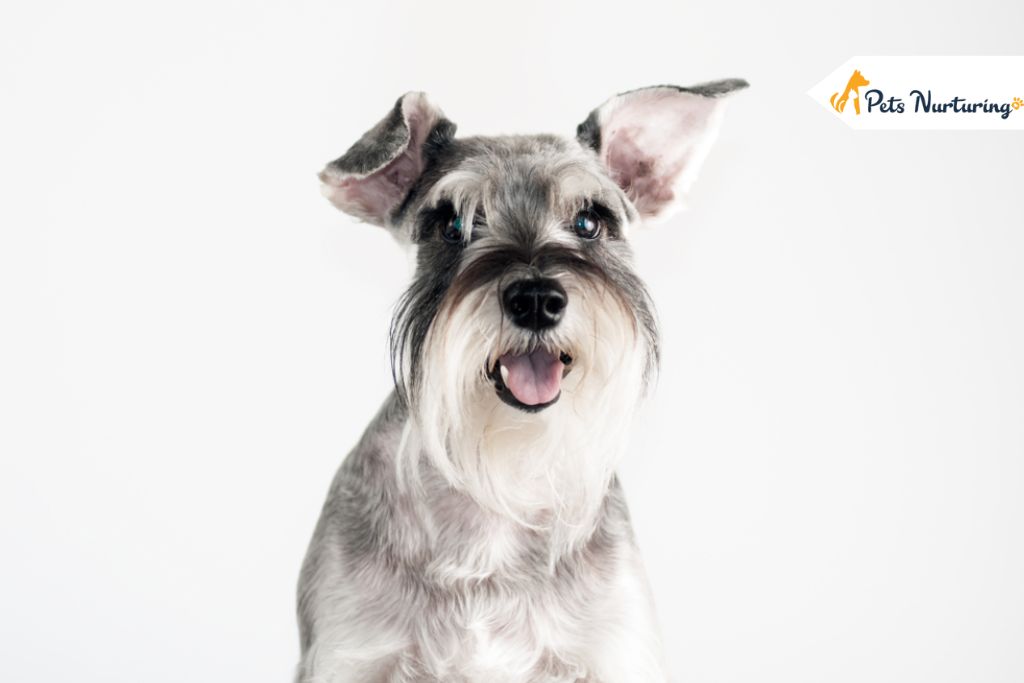
If you are looking for a peculiar breed of dog to pet or a cute companion that fills your life with memories and joy, then continue reading this blog. In this blog, we talk about one of the most distinctive breeds of dog Schnauzer. We’ll cover its history, appearance, characteristics, and much more in this blog.
So, if you are considering adding a Schnauzer to your family, then go through this blog till the end. By gaining a deeper understanding of the Schnauzer breed, you’ll be better equipped to provide optimal care for your furry friend. Further, if you’re someone who loves pets, you’ll enjoy and gain some helpful knowledge about Schnauzers from this blog. So, without any further delay, let’s dive in.
Overview of Schnauzer
Schnauzer Dog Breed
Breed Group : Terrier
Height : 12-14 Inches
Weight: 11-20 Pounds
Lifespan: 12 to 15 years
Coat: Double-coated with a wiry topcoat and a soft undercoat
Color: Salt and pepper, black, black and silver
Vocal Level: Moderate to high
Temperament: Intelligent, alert, lively, affectionate, loyal, and protective
Needs of Grooming : Regular grooming required
Hypoallergenic: No
Origin : Germany
History
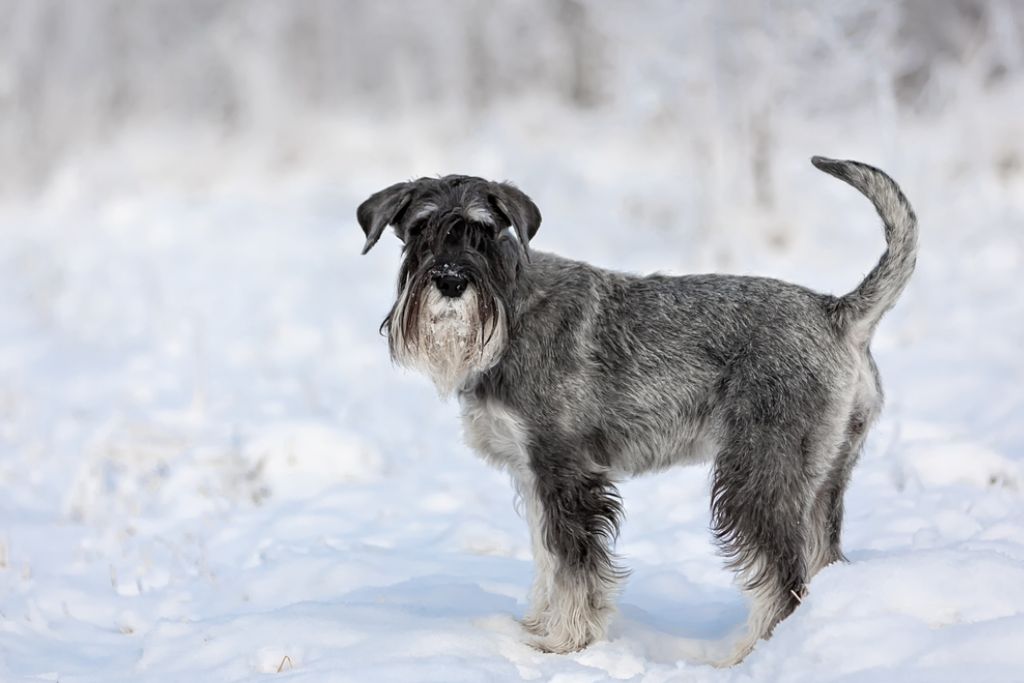
The history of standard Schnauzer can be traced back to the 15th century in Germany.
Long ago, these dogs were just beloved pet dogs — they were working dogs, serving essential roles on farms across Germany.
Schnauzer dogs were tasked with a variety of jobs, from keeping the storage area accessible from rats and mice to guarding valuable livestock.
Their keen intelligence and unwavering loyalty made them essential companions for farmers and families alike. However, as time passed, Schnauzers began to take on new roles beyond the farm. They proved themselves as excellent watchdogs, fiercely protecting their homes and families from any potential threats.
Their distinctive appearance – with their bushy eyebrows and beard-like facial hair – made them easily recognizable and beloved by all who crossed their path.
But it wasn’t just their looks that set Schnauzers apart; it was their personality too. These dogs were known for their lively spirits and affectionate natures. They formed strong bonds with their human companions, becoming cherished members of the family.
Further, over time, selective breeding led to the emergence of three distinct Schnauzer types:
- Standard Schnauzer: Considered the original Schnauzer, this medium-sized breed likely resulted from crosses between herding and guarding dogs. Possibly mixed with Wolfspitz and Poodles, they possess the classic salt-and-pepper coat.
- Giant Schnauzer: Developed in the 17th century, these large working dogs were bred from Standard Schnauzers and possibly Great Danes. Initially called “Munich Schnauzers,” they were used for driving cattle and later served in police and military roles.
- Miniature Schnauzer: Emerging in the late 19th century, these spunky pups were bred down from Standard Schnauzers, potentially involving Affenpinschers and Miniature Poodles.
As the years passed, Schnauzer’s breed continued to gain popularity not just in Germany but around the world. Their intelligence and trainability made them favorites among dog lovers everywhere. Hence, in 1926, the Schnauzer breed was officially recognized by the American Kennel Club and has remained one of the most popular breeds in the United States for many years. As of 2022, the Miniature Schnauzer ranked as the 17th most popular breed, according to the AKC.
The distinct bushy eyebrows of Schnauzer served a practical purpose in the past. Bushy brows helped protect their eyes from dirt and debris while they worked on farms, making them not just stylish but also functional!
Appearance
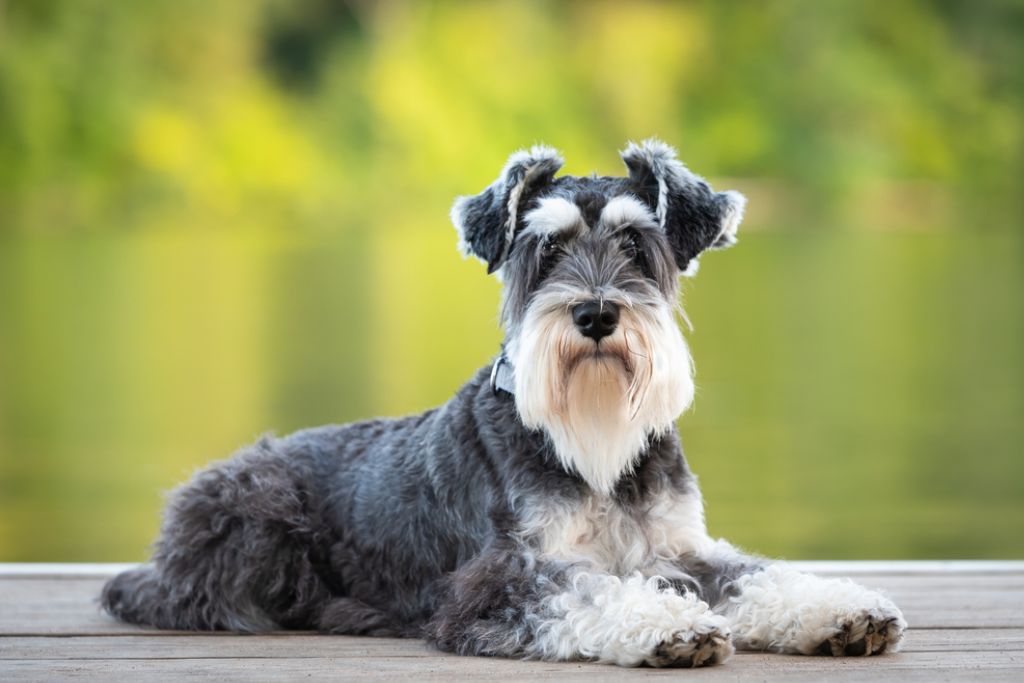
The unique appearance of Schnauzer dogs is what distinguishes them as a breed. These breeds are known for their square-shaped build, sturdy stature, and abundant facial hair.
One of the most unique and recognizable features of Schnauzer dogs is their bushy eyebrows and beard-like muzzle. These features provide a distinguished and expensive look, which contributes to their popularity as a beloved dog breed. Further, about their coat, this breed comes with beautiful double-layered fur. The double-layered coat includes a wiry outer layer and a soft undercoat, which makes their appearance unique and attractive.
In addition to enhancing their uniqueness and attractiveness, their fur also offers protection against harsh weather conditions. Furthermore, in the past, it aided them in their farm duties, safeguarding their bodies and eyes from rust, small stones, and abrasions.
Regarding their size and weight, the official measurements from the American Kennel Club for standard Schnauzer are as follows:
| Standard Schnauzer | Weight | Height |
| Male | 30-50 Pounds | 18.5-19.5 inches |
| Female | 30-45 Pounds | 17.5-18.5 inches |
However, there are two more varieties of Schnauzer: Miniature and Giant. Here is the table showing the description of the weight and height of the respective Schnauzer.
| Mini Schnauzer | Weight | Height |
| Male | 11-20 Pounds | 12- 14 inches |
| Female | 11-16 Pounds | 12-14 inches |
| Giant Schnauzer | Weight | Height |
| Male | 65 to 95 pounds | 23.5 to 27.5 inches |
| Female | 55 to 75 pounds | 20.5 to 25.5 inches |
Note: The size and weight provided in the tables are approximate, as the actual height and weight can vary depending on the dog’s lifestyle, habits, and environment.
Schnauzer ears and tails were cropped in the past and it was once a standard practice. However, it is illegal currently.
Coat and Color
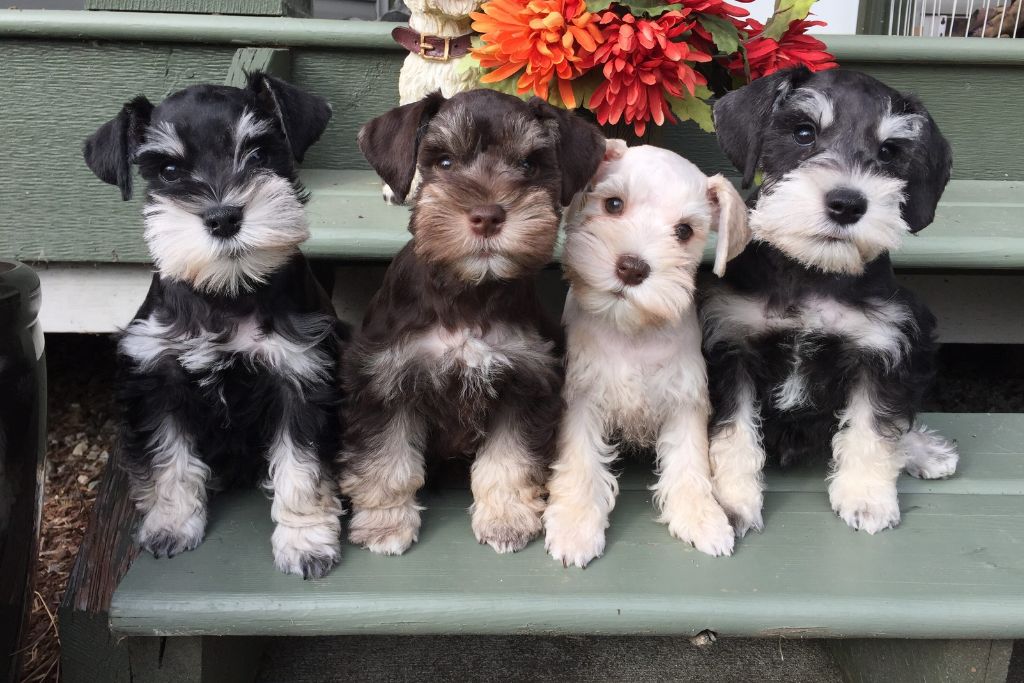
Schnauzer dogs are featured with double coats and come in a few standard color variations.
All Schnauzer breeds share a double coat, offering them protection from the elements and insulation in both hot and cold weather.
Here is the breakdown for the Schnauzer coat layer:
| Layer type | Description | Grooming Needs |
| Outer Layer | Unlike smooth-coated breeds, Schnauzer fur doesn’t shed easily. This makes this top layer wiry and provides a peculiar look. | Regular and professional grooming is essential. |
| Undercoat | A dense layer of soft, fluffy fur that provides warmth and insulation | Regular bathing is required to keep the undercoat clean. |
Color Palette:
Most common colors:
- Salt and pepper ( mixture of black and white hair throughout the body)
- Solid black
- Black and Silver ( Miniature only)
Rare Colors:
- White
- Brown
- These colors are not recognized by all Kennel Clubs.
Schnauzer puppies can sometimes be born with a different colored coat that changes as they mature.
Characteristic and Temperament

Just like their unique appearance, Schnauzers exhibit distinctively playful characteristics. Schnauzers are intelligent, loyal, and full of energy, which makes them beloved friends to have around.
Let’s learn more about their characteristics and temperament:
Hallmark Traits:
- Intelligence – Schnauzers are brilliant dogs, quick to learn and eager to please. Their sharp minds make them excellent candidates for police dog and various canine sports.
- Loyalty – Schnauzers form strong bonds with their families and are known for their devotion. They thrive on companionship and enjoy being included in daily activities.
- Energetic – Inheriting their working dog roots, Schnauzers possess abundant energy. They require regular exercise such as walks, playtime, and engaging activities to stay physically and mentally stimulated.
Temperament Aspects:
- Playful: Schnauzers retain a youthful spirit throughout their lives. They enjoy games like fetch, tug-of-war, and interactive toys, making them excellent companions for active families.
- Protective: Their alert nature makes them natural watchdogs. They are known to bark at unfamiliar sights or sounds, potentially acting as a deterrent to potential threats.
- Alertness: Schnauzers are highly aware of their surroundings and can be easily trained for tasks requiring focus and attentiveness.
- Independent Streak: While intelligent and trainable, Schnauzers can possess a touch of stubbornness. Positive reinforcement training methods with consistent leadership are crucial for establishing a solid bond and good manners.
Potential Challenges:
- Barking: Due to their proactive nature, Schnauzers can manifest excessive barking. Proper training and helping appropriate outlets for their energy, you control their barking.
- Stubbornness: Schnauzers are stubborn due to their independent nature. Patience, positive reinforcement, and consistent training are crucial to overcoming this.
- Grooming Needs: Their wiry coat requires regular brushing and professional grooming to maintain its health and prevent matting.
Health and Nutrition ( Including Common Health Problems)
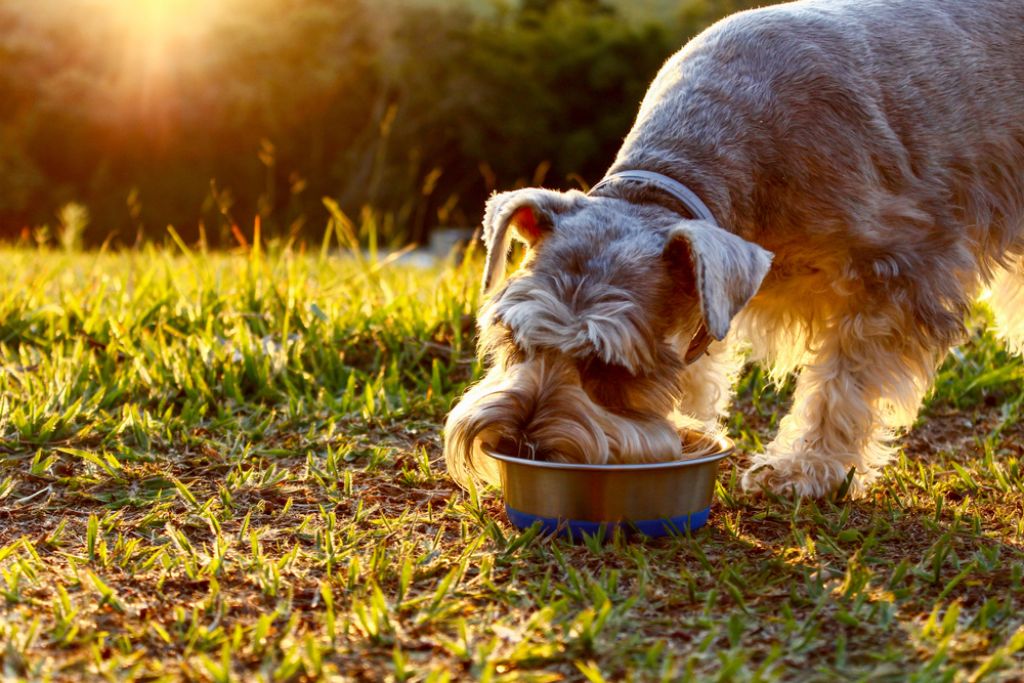
Schnauzers are generally healthy dogs, but like any breed, they are predisposed to specific health conditions. Knowing these potential concerns is crucial for responsible pet ownership and ensuring your furry friend enjoys a long, healthy life.
Common Health Problems of Schnauzers
Keep in mind that these are common health issues that Schnauzers may encounter, but not all Schnauzers will necessarily experience them.
- Skin Conditions: Schnauzers may be prone to skin allergies and dermatitis, which can cause itching and discomfort.
- Ear Infections: Due to their floppy ears, Schnauzers can catch ear infections. Regular cleaning and proper ear care are essential for prevention.
- Bladder and Kidney Stones: Schnauzers, particularly Miniature Schnauzers, are more susceptible to developing bladder or kidney stones. Maintaining proper hydration and a veterinarian-recommended diet can help minimize the risk.
- Pancreatitis: This is a common digestive disorder in Schnauzers, it is characterized by inflammation of the pancreas.
About Health and Nutrition
Before moving to health and nutrition, have a look at the amount of food required for Schnauzers:
| Life Stage | Miniature Schnauzer | Standard Schnauzer | Giant Schnauzer |
| Puppy | 1/2 – 1 1/2 cups | 1 – 2 1/2 cups | 2 – 4 cups |
| Young | 1/2 – 1 1/2 cups | 1 – 2 1/2 cups | 2 – 4 cups |
| Adult | 1/2 – 1 1/2 cups | 1 – 2 1/2 cups | 2 – 4 cups |
Please note that these are approximate measurements, and the actual amount may vary based on factors such as activity level, metabolism, and individual dietary needs.
Here are the details regarding the nutrition required for Schnauzers:
| Nutrients | Description |
| Protein | Chicken, turkey, beef, or fish |
| Healthy fats | Fish oil or flaxseed oil |
| Carbohydrates | Brown rice, oats |
| Vegetables and fruits for Vitamins | Carrots, green beans, apples, and blueberries. |
Important Note:
The nutrients mentioned in the table are just suggestions and tips. The type and amount of nutrients needed by Schnauzers depends on their age, weight, height, and activity level. Hence it is recommended to consult a veterinarian before making any significant changes to your Schnauzer’s diet.
Choose a high-quality dog food that is specifically formulated for Schnauzers’ size, age, and activity level. Look for brands that list real meat as the first ingredient and avoid foods with artificial additives and fillers.
About Health
To ensure the health and longevity of your pet, stick to the following steps:
- Always provide access to fresh, clean water to keep your Schnauzer hydrated throughout the day.
- Regular exercise is crucial for maintaining your Schnauzer’s overall health and preventing obesity. Aim for daily walks, playtime, and interactive games to keep them physically and mentally stimulated.
- Allow your veterinarian to monitor your Schnauzer’s overall health and identify any potential concerns early on through regular checkups.
- Keep your Schnauzer up-to-date on vaccinations that will help you protect them from preventable diseases.
Behavior and Training
If you are considering owning a Schnauzer, it’s essential to be aware of the following behavior and training traits to ensure a positive and fulfilling relationship with your pet:
- Provide your Schnauzer with plenty of physical exercise.
- Be consistent with your training methods and expectations.
- Use clear commands, and reward good behavior consistently.
- Training a Schnauzer requires time, patience, and consistency.
- Expose your Schnauzer to various people, animals, and environments.
- Keep your Schnauzer mentally engaged with toys, puzzles, and training sessions.
Following these steps and tips will keep your Schnauzer well-behaved and healthy. Further, maintaining this routine will contribute to a happy and fulfilling life for both you and your furry companion.
Grooming Needs
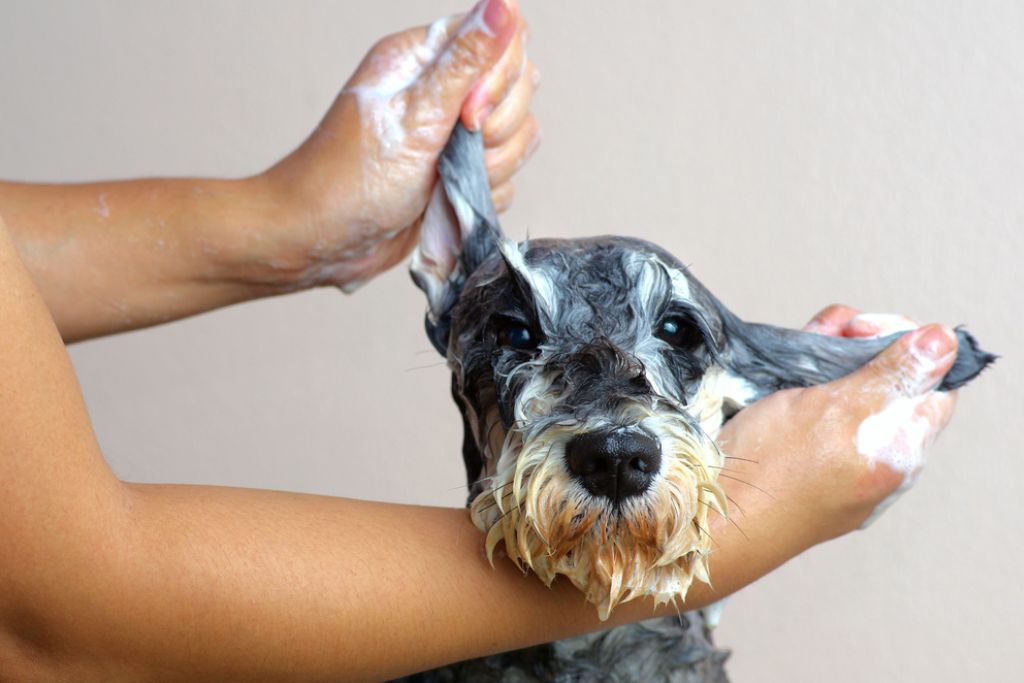
Schnauzer is known for its unique and different mustaches and fur. Hence, to maintain their distinctive appearance and overall health, these breeds require regular and specific grooming.
Here is the table that you should follow to groom your Schnauzer:
| Grooming Needs | Number of times |
| Brushing | Regularly required |
| Bathing | Once or twice a month |
| Ears Cleaning | Clean ears regularly to prevent wax buildup |
| Teeth Cleaning | At least thrice a week |
| Nails Cleaning | Trim Every 2-4 weeks |
| Skin and Coat Inspection | Regular inception of skin and coat required to maintain pet’s health |
| Eye Care | Regular checking of the eyes is required to prevent redness and irritation. |
| Wrinkles | Gently wipe dirt regularly from wrinkles to prevent irritation or infection. |
However, it is crucial to be concerned with veterinary advice before making any significant changes to your Schnauzer’s grooming routine or addressing any health concerns.
Are Schnauzers Hypoallergenic?
Schnauzers are not considered hypoallergenic, as they do produce dander and can trigger allergic reactions in some individuals. However, they are known to shed minimally, which can make them a better option for people with allergies compared to other breeds that shed more heavily. Allergy sufferers need to spend time with a Schnauzer before committing to ownership to see if they have any allergic reactions. Regular grooming and cleaning can also help minimize allergens in the home.
Price
The price of a Schnauzer puppy varies depending on the breeder’s reputation, age, weight, and dog pedigree. However, the average cost of Schnauzer is as follows:
| Schnauzer Type | Price |
| Miniature Schnauzer Puppies Price | $1000 – $1500 |
| Standard Schnauzer Price | $1500 – $2000 |
| Giant Schnauzer Price | $2000 – $2500 |
Further, you can get a mini schnauzer for sale at $800 – $1000. Mini Schnauzer puppies for sale can also be adopted from a shelter or rescue for a minimal price of $500 – $800.
Lifespan
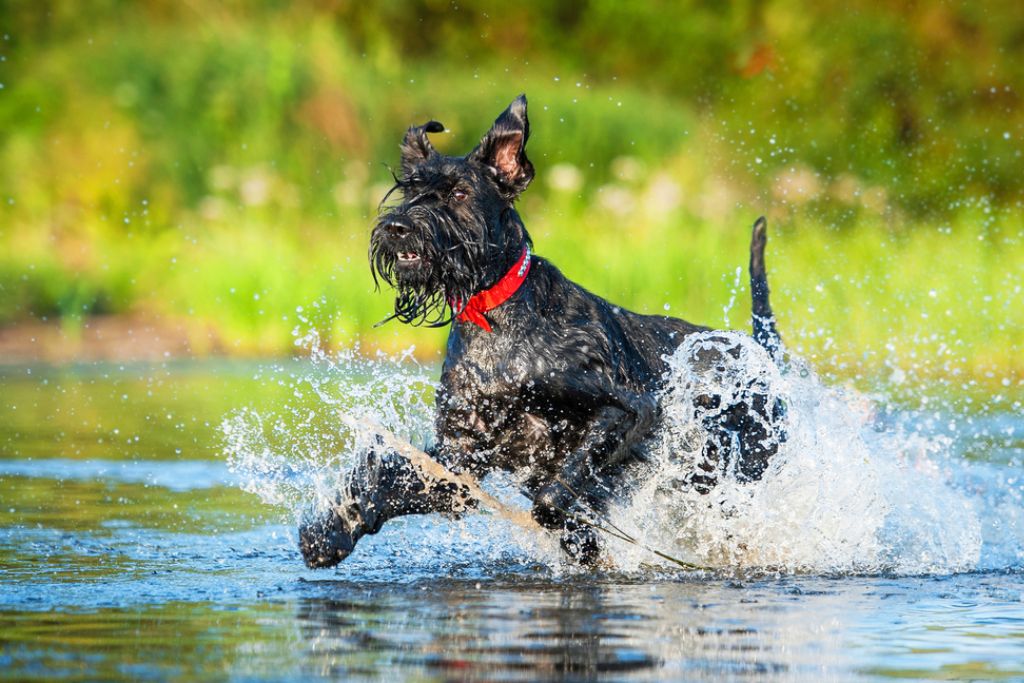
Schnauzer are one of the longest-living dog breeds typically ranging from 12 to 16 years, although some may live longer with proper care and attention to their health needs. Further, proper exercise, grooming, and a healthy diet are essential factors that can contribute to their longevity and overall well-being.
Frequently Asked Questions on Schnauzer
Yes, Schnauzers are friendly, playful, and trainable dogs. They are happy to go along with other animals and kids, which makes these breeds excellent companions for families of all ages.
Well, Schnauzers are vocal and may bark a lot. However, they are trained well and provided with proper guidance and socialization to help manage their barking behavior.
Schnauzers are moderately high maintenance due to their grooming needs and energetic temperament. They require regular grooming to maintain their distinctive coat, including brushing, trimming, and occasional bathing.
Wrapping Up
If you’re looking for a joyful, intelligent, and affectionate pet to bring into your home, consider the Schnauzer breed. With their happy-go-lucky nature and intelligence, Schnauzers are sure to bring warmth and companionship to your household.
Explore More:








